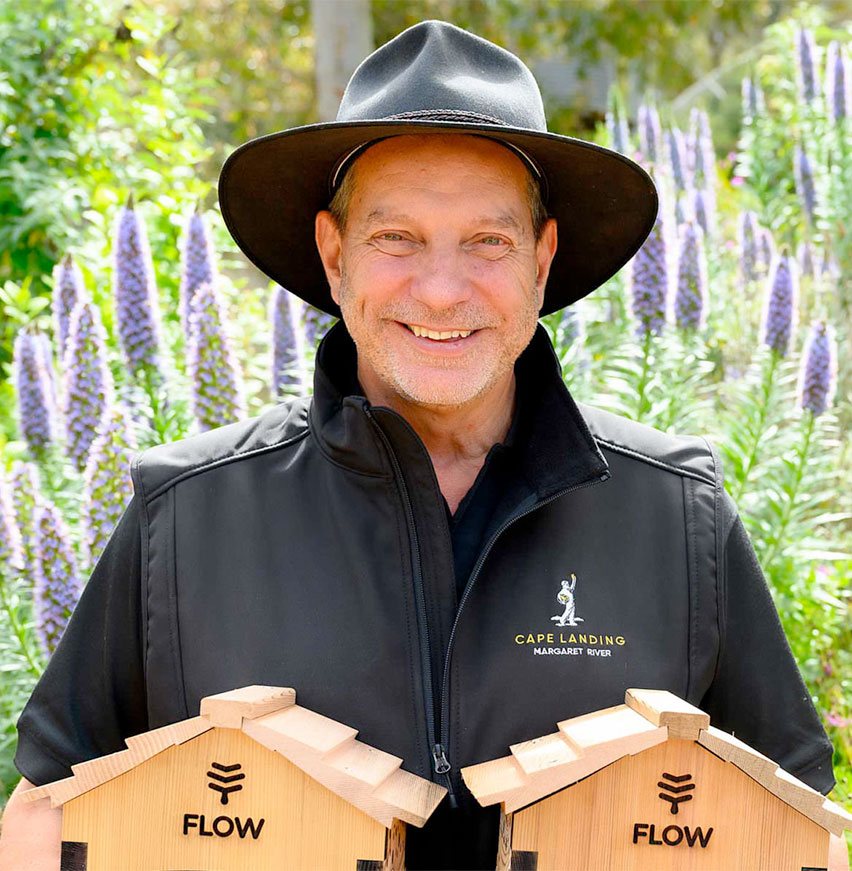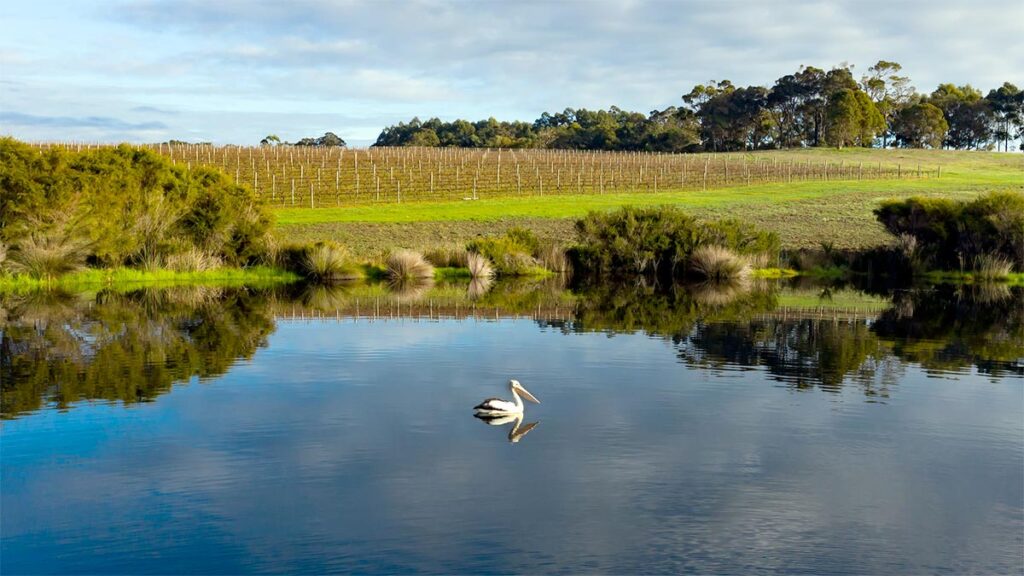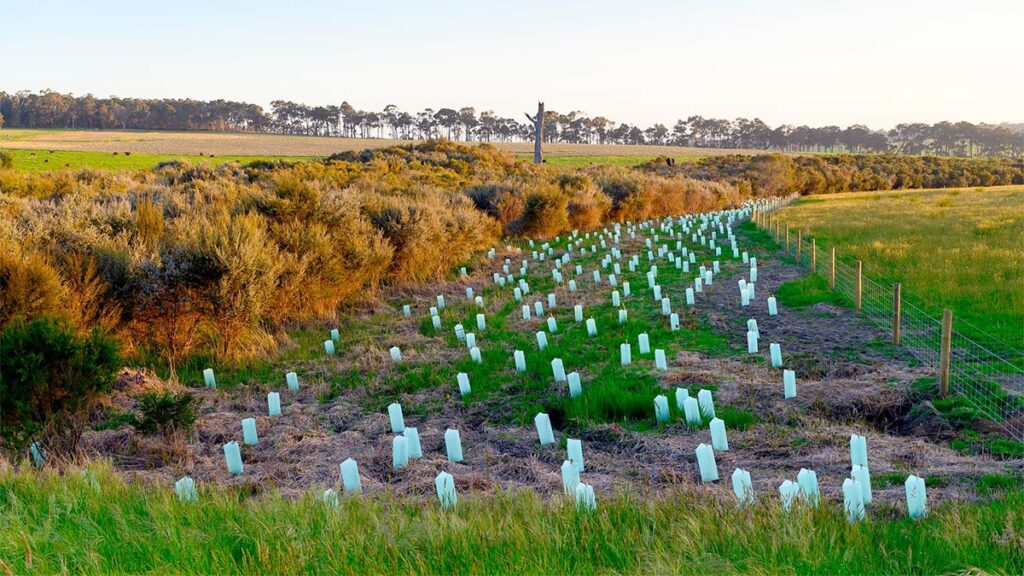Biodiversity
BIODIVERSITY
Developing a Distinctly Australian Vineyard
Our viticultural and general farming practices at Cape Landing reflect the obligation we feel to take care of all species, maintaining a natural balance between our vineyard and its interactions with the fauna (animal life) and flora (plant life) in and around it.
Research clearly show that plants, animals and soils function at their best when living in symbiotic relationships with a wide diversity of microbes from many different functional groups. The more numerous and genetically diverse these interactions are, the higher the biodiversity and the better buffered and more sustainable our vineyard system will be.
Although native grasses, planted under vine and as cover crops in mid-rows, may not look as picturesque as the classic image of a manicured vineyard, we see a great improvement in grape productivity and fewer pests and diseases when our vines grow in biodiverse soil.
Biodiversity also helps prepare us for the creeping consequences of climate change.
The integration of biodiversity and fruit production helps us focus our efforts on both the restoration and maintenance of native species and the plant communities that support the vineyard ecosystem.

“To all of us at Cape Landing, embracing the benefits of Australia’s native bugs and bush seems like a no-brainer!”
Mark Lewis, Cape Landing
Using Natural Products And Native Species
Cape Landing is not officially certified organic but we are on our way and steadily phasing out use of chemicals.
Wherever possible we make use of natural products and native species that add carbon back to the soil, retain moisture, and allow for more resilient root systems.
We encourage insects that help us pollinate plant species (other than vines) in the vineyard and surrounding areas and naturally prey upon the pests that threaten the vines and the viability of the fruit produced for wine production.
This leads to vines being more naturally resistant to disease, resulting in ripened fruit that displays added layers of flavour, complexity and vibrancy.
“It is our responsibility to sustainably conduct agriculture and winemaking, while respecting the related ecosystems, with the final objective of leaving that land in better health for the next generation”
Bruce Dukes - Winemaker
Our Environmental Program
Soil Management/Biodiversity
We incorporate cover crops and native plants under vine, in the mid-rows, headlands, borders and in the surrounding landscape. In the vine rows, we use mulches, usually canes from the previous growing season, in the vine rows.
By nurturing our soils, we achieve better plant health and balance which leads to higher quality fruit. We look for naturally occurring fungi to spray to assist with botrytis prevention.
Weed Control
Mulching, under vine mechanical weed cutting and occasional sheep grazing of the vineyard throughout winter contribute to natural weed management.
Water Catchments


Reintroduction of Native Species
Introduction of Pollinators
Cape Landing has introduced beehives in areas of natural growth between the vineyard blocks, resulting in an increase in pollinators across the vineyard throughout the year and the added benefit of honey production.
A combination of organic methods, sustainable principles and the latest in technology create the ultimate balance for our vineyard and its soils, and our water catchment areas.
